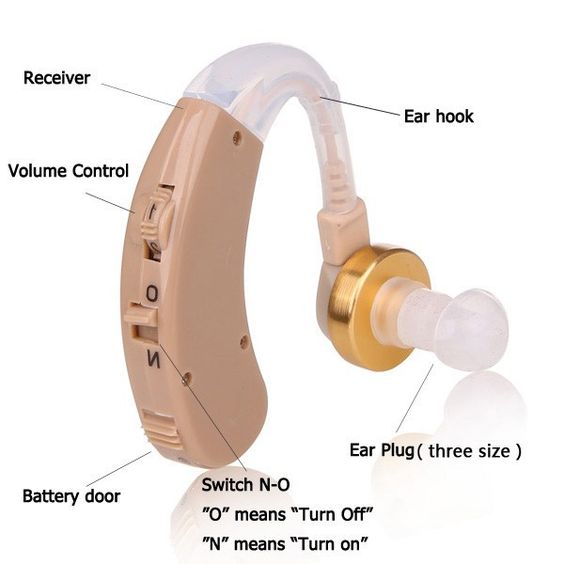In today’s world, where communication and sound play crucial roles in our daily lives, having the right hearing support can significantly impact quality of life. "Ear machines for hearing," a term often used interchangeably with hearing aids or assistive listening devices, encompasses a range of technologies designed to enhance auditory experiences for those with hearing impairments. At Decibel Clinic, we aim to demystify these devices, providing insight into their functions, benefits, and how they can help improve your hearing.
What Are Ear Machines for Hearing?
Ear machines for hearing are advanced electronic devices designed to assist individuals with varying degrees of hearing loss. They work by amplifying external sounds and delivering them to the ear in a way that is more easily perceived. These devices can range from traditional hearing aids to more sophisticated assistive listening systems, each tailored to meet different auditory needs.
Types of Ear Machines for Hearing
- Hearing Aids
Hearing aids are the most commonly used ear machines and come in various styles and technologies:
- Behind-The-Ear (BTE): Worn behind the ear, this model is known for its durability and power, making it suitable for severe hearing loss.
- Receiver-In-Canal (RIC) or Receiver-In-The-Ear (RITE): This style combines a small speaker with a thin wire, offering a more discreet design while providing high-quality sound.
- In-The-Ear (ITE) and In-The-Canal (ITC): Custom-made to fit inside the ear, these models offer discretion and comfort.
- Completely-In-Canal (CIC): Nearly invisible, this model fits deep within the ear canal, ideal for those seeking a discreet solution.
Features of Modern Hearing Aids:
- Directional Microphones: Focus on sounds coming from a specific direction while reducing background noise.
- Bluetooth Connectivity: Enables direct streaming of phone calls, music, and other audio from smartphones and other devices.
- Rechargeable Batteries: Provide convenience with all-day power and easy recharging.
- Assistive Listening Devices (ALDs)
Assistive Listening Devices are designed to enhance hearing in specific settings and are often used in conjunction with hearing aids:
- FM Systems: Utilize radio signals to transmit sound directly to the listener, useful in classrooms or public venues.
- Infrared Systems: Employ infrared light to transmit sound, ideal for theaters or auditoriums.
- Personal Amplifiers: Portable devices that amplify sound for one-on-one conversations or small group settings.
- Cochlear Implants
Cochlear implants are sophisticated devices for individuals with severe to profound hearing loss who do not benefit from traditional hearing aids:
- External Processor: Captures sound and converts it into digital signals.
- Internal Implant: Surgically placed under the skin, converts digital signals into electrical impulses that stimulate the auditory nerve.
How Ear Machines Work
Ear machines work through a multi-step process to improve hearing:
- Sound Capture: The device’s microphone picks up sounds from the environment.
- Sound Processing: An amplifier increases the volume and adjusts the sound quality according to the user’s hearing profile.
- Sound Delivery: The processed sound is then delivered through a receiver or speaker into the ear, making it easier to hear and understand.
Benefits of Ear Machines for Hearing
Using ear machines for hearing offers numerous advantages:
- Improved Sound Clarity: Amplifies sounds to enhance speech understanding and overall auditory experiences.
- Customization: Modern devices can be tailored to individual hearing profiles, addressing specific needs and preferences.
- Enhanced Communication: Facilitates better participation in conversations, social activities, and various environments.
- Adaptability: Advanced ear machines adjust automatically to different sound environments, providing optimal hearing in diverse situations.
Choosing the Right Ear Machine
Selecting the right ear machine involves considering several factors:
- Degree and Type of Hearing Loss: Different devices are suited for various levels and types of hearing loss.
- Lifestyle Needs: Consider the environments in which you will use the device, such as noisy public places or quiet settings.
- Comfort and Fit: Ensure the device fits comfortably and suits your preference for visibility and convenience.
- Budget: Prices can vary widely, so evaluate the features you need and choose a device that fits your budget while addressing your hearing requirements.
Conclusion
Ear machines for hearing, including hearing aids, assistive listening devices, and cochlear implants, play a vital role in improving auditory experiences for those with hearing impairments. At Decibel Clinic, we are dedicated to helping you find the right ear machine that enhances your hearing and fits your lifestyle. Our expert audiologists offer personalized consultations to ensure you receive the most effective solution for your hearing needs.





Comments